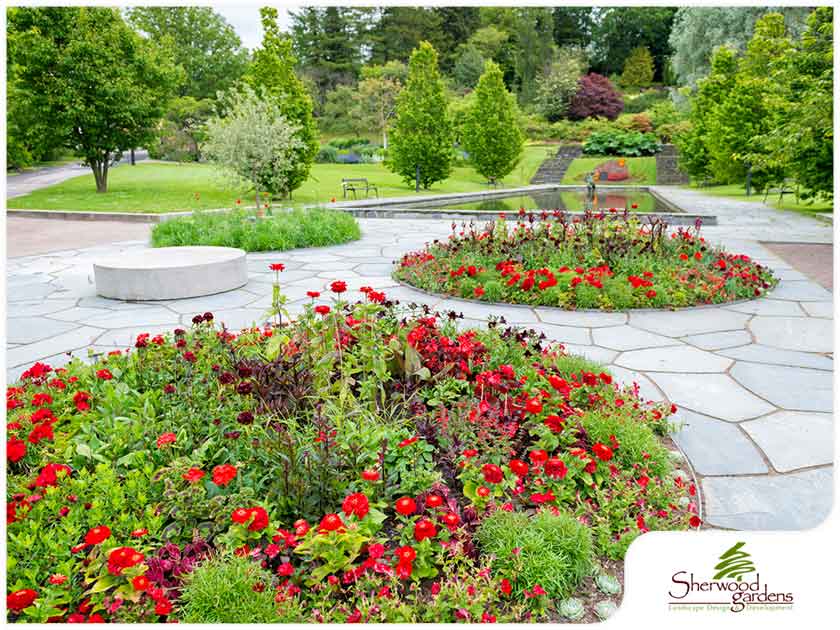The 25-Second Trick For Hilton Head Landscapes
The 25-Second Trick For Hilton Head Landscapes
Blog Article
The Buzz on Hilton Head Landscapes
Table of ContentsThe Single Strategy To Use For Hilton Head LandscapesThe smart Trick of Hilton Head Landscapes That Nobody is Talking AboutThe Best Strategy To Use For Hilton Head LandscapesThe Best Strategy To Use For Hilton Head LandscapesHilton Head Landscapes Things To Know Before You BuyOur Hilton Head Landscapes IdeasUnknown Facts About Hilton Head Landscapes
Line creates all kinds and patterns and can be made use of in a range of methods in the landscape. Line in the landscape is developed by the edge between two materials, the overview or silhouette of a type, or a long straight feature. Lines are a powerful tool for the designer since they can be utilized to create a limitless selection of forms and types, and they manage movement of the eye and the body.

Lines in the landscape. The buildings of lines identify just how people respond to the landscape, both psychologically and physically.
Hilton Head Landscapes Fundamentals Explained
Curved lines create an informal, natural, kicked back personality that is connected more with nature and asymmetrical equilibrium. Rounded lines relocate the eye at a slower speed and add secret to the room by creating surprise views.
Vertical lines in the landscape consist of tall, slim plant material, such as trees, or high frameworks, such as an arbor or a bird home on a pole. Straight lines relocate the eye along the ground aircraft and can make an area really feel larger. Reduced lines are much more restrained and create a feeling of remainder or repose.
Hilton Head Landscapes Can Be Fun For Anyone
Lines are additionally produced by the vertical kinds of developed features and plant product. There are 3 key line types that create type in the landscape: bedlines, hardscape lines, and plant lines.
Bedlines connect plant product to the residence and hardscape since the eye follows the line, moving the stare through the landscape. Hardscape lines are developed by the edge of the hardscape, which marks the built framework. Line can likewise be produced by long and slim materials, such as a fencing or wall.
Hilton Head Landscapes Things To Know Before You Get This
Form is discovered in both hardscape and plants, and it is generally the dominant visual component that spatially organizes the landscape and commonly determines the style of the yard. The form of structures, plant beds, and garden ornaments additionally identifies the general kind theme of the garden. Formal, geometric types include circles, squares, and polygons.
Plants produce type in the yard through their lays out or silhouettes, yet form can also be defined by a void or negative space in between plants - landscapers in bluffton sc (https://www.edocr.com/v/n3mz8xkl/stevenagonzales/hilton-head-landscapes). Circles can be full circles, or they can be separated into fifty percent circles or circle segments and incorporated with lines to create arcs and tangents
Some Known Questions About Hilton Head Landscapes.
Circles are a solid layout kind due to the fact that the eye is constantly attracted to the center, which can be used to emphasize a focal point or link other forms. Round forms in hardscape and lawn panels.
The square form can additionally be fractional and previously owned repetitively to develop a grid pattern. Unlike circles, squares are more powerful on the edges, which can be lined up or overlapped to create one-of-a-kind patterns and even more complex kinds.
Twisting lines typically simulate the all-natural program of rivers or streams and can be called smooth lines with deeply curved undulations. Twisting lines (Figure 3) work well for paths, plant bedlines, and completely dry stream beds. Meandering lines can add interest and enigma to a yard by leading visitors around corners to discover brand-new views and spaces.
What Does Hilton Head Landscapes Do?

Figure 5. Fragmented edges: stepping stones in pathway. Form is one of the most long-lasting top quality of a plant (landscape design hilton head). https://www.provenexpert.com/steven-gonzales/?mode=preview. Common plant kinds are well established and standard, as kind is the most regular and well-known attribute of plants. Kind can also be developed through the massing of plants, where the general mass develops a different type than an individual plant.
An extremely different form should be utilized with careone or 2 job well as a centerpiece, however also lots of wreak havoc. Natural plant types, instead than over-trimmed kinds, must develop the mass of the make-up. The relevance of overall type is much more or less based on the checking out perspectivethe type of a tree can appear quite different to a person standing under the canopy versus viewing the tree from a distance in an open field.
Some Known Details About Hilton Head Landscapes
Plant forms additionally produce and define the gap or open areas between the plants, developing either convex or concave forms in the gaps. High-arching tree branches typically develop a concave open area under the branches, you can look here and a round canopy with low branches fills up the space to create a convex type in the open space under the tree.

Report this page